There are numerous species of ibis, displaying a fascinating array of characteristics and adaptations.
Comprising a diverse group of wading birds, ibises are distributed across various continents, thriving in a range of ecosystems from wetlands and marshes to urban landscapes.
This collection encompasses 29 distinct types of ibis, each contributing to the avian biodiversity of their respective regions.
From the iconic African Sacred Ibis with its religious symbolism to the striking Scarlet Ibis adorned in vivid hues, these birds exhibit unique plumage, feeding behaviors, and nesting habits.
This comprehensive overview delves into the rich tapestry of ibis diversity, shedding light on the remarkable adaptations that have allowed these birds to thrive across a multitude of landscapes.
Types of Ibis
Here, we’ll explore the fascinating world of ibises, delving into their distinct characteristics, habitats, and conservation statuses, showcasing the importance of preserving these avian wonders in the face of environmental challenges.
1. African Sacred Ibis
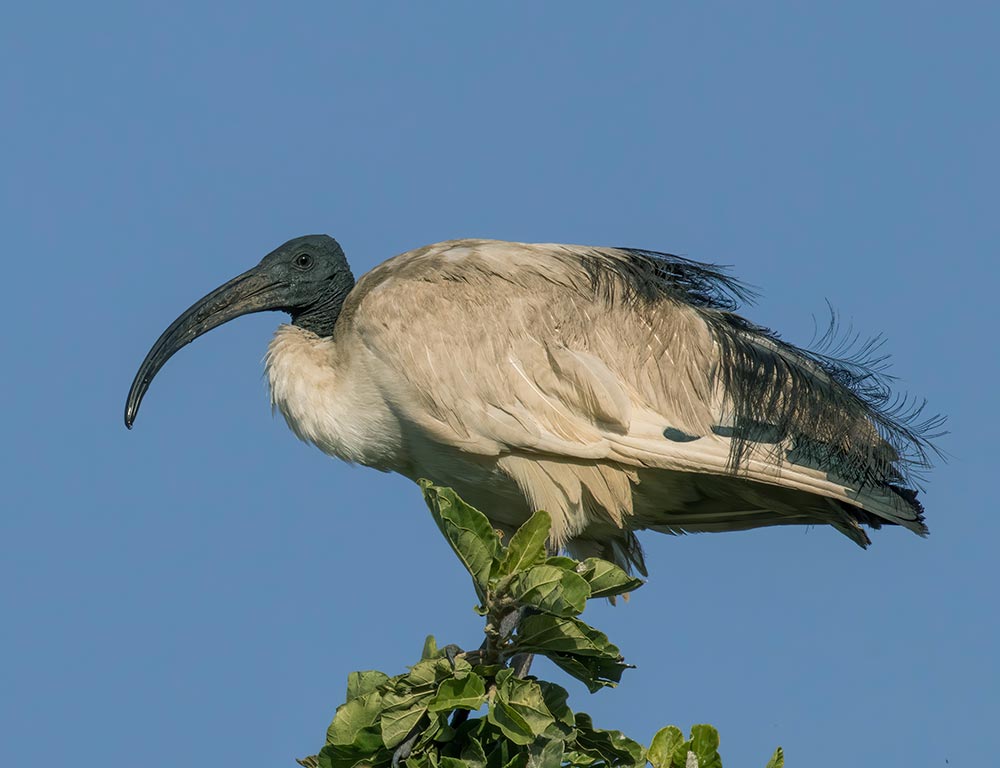
- Scientific Name: Threskiornis aethiopicus
- Population: Variable; widely distributed in sub-Saharan Africa and parts of the Middle East
- Life Span: Up to 20 years
- Size: Approximately 68-80 cm in length
- Weight: Around 1.2 kg
- Food: Omnivorous diet including fish, insects, small mammals, and amphibians
- Status: Least Concern
The African Sacred Ibis is an iconic bird with its distinctive long bill and white plumage. Often found near water bodies, these ibises exhibit a remarkable adaptability to various habitats.
They form large colonies for breeding, utilizing trees and cliffs. Despite their name, they are not considered sacred in the religious context but are frequently associated with religious symbolism.
African Sacred Ibises are known for their synchronized soaring and are often seen in flight in V-shaped formations.
They are opportunistic feeders, scavenging for food in diverse environments. With their long lifespan and ability to thrive in different ecosystems, these ibises play a crucial role in maintaining ecological balance.
2. Australian White Ibis
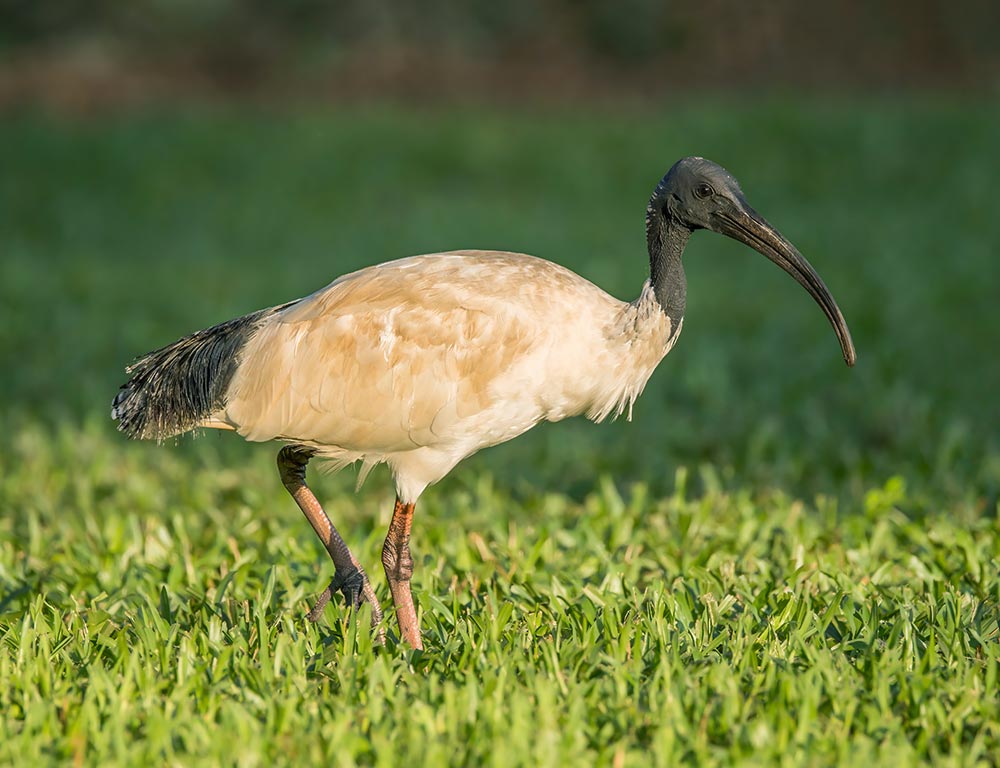
- Scientific Name: Threskiornis molucca
- Population: Common in Australia, also found in nearby regions
- Life Span: Approximately 10 years
- Size: About 65-75 cm in length
- Weight: Around 1.2 kg
- Food: Varied diet, including insects, small animals, and human scraps
- Status: Least Concern
The Australian White Ibis, colloquially known as the “Bin Chicken” due to its scavenging habits in urban areas, is a large wading bird with predominantly white plumage.
These ibises have adapted to urban environments, foraging for food in bins and garbage dumps.
Despite their unappealing feeding habits, they contribute to waste reduction by consuming scraps. Australian White Ibises are highly social, often seen in large flocks.
They breed in colonies, building nests in trees. Their adaptability to both natural and man-made environments highlights their resilience in the face of habitat changes.
3. Black-headed Ibis
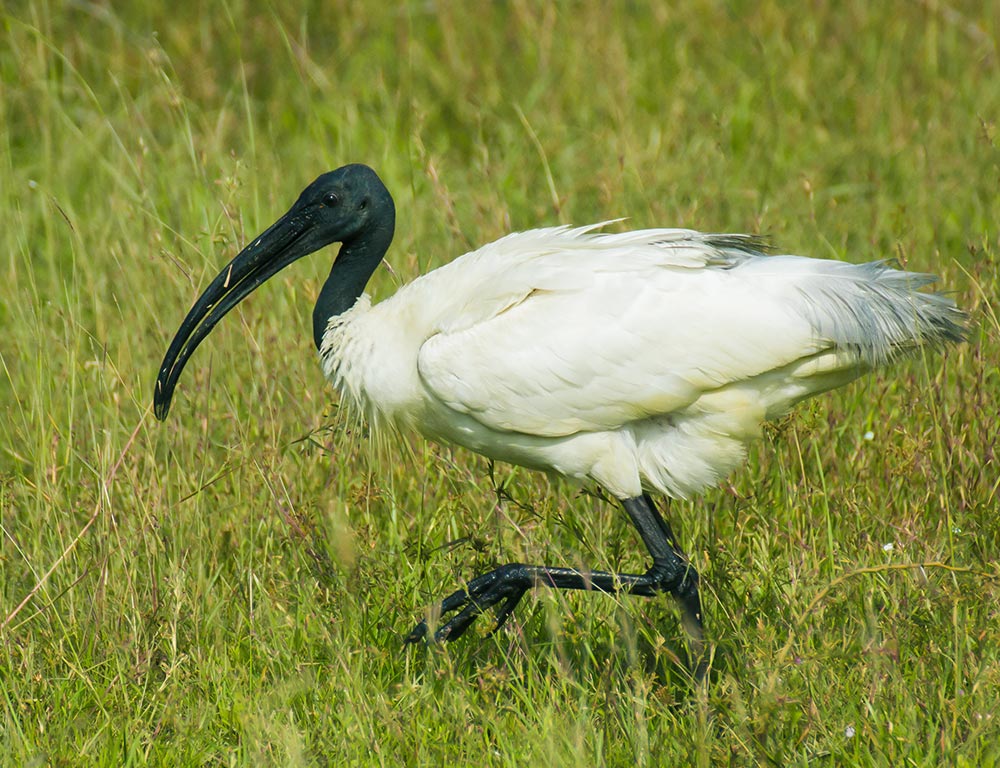
- Scientific Name: Threskiornis melanocephalus
- Population: Widespread in South Asia, Southeast Asia, and parts of West Asia
- Life Span: Around 15 years
- Size: Approximately 68-76 cm in length
- Weight: About 1 kg
- Food: Mainly feeds on aquatic invertebrates, small fish, and insects
- Status: Least Concern
The Black-headed Ibis is characterized by its striking black and white plumage and, as the name suggests, a distinctive black head and neck.
Typically found in wetlands and marshy areas, these ibises are skilled foragers, using their long bills to probe for food in the mud.
Black-headed Ibises are known for their solitary or small group habits, although they may gather in larger numbers during the breeding season.
Their adaptability to various water habitats makes them versatile foragers. Conservation efforts are vital to ensure the preservation of their preferred ecosystems.
4. Black-faced Ibis
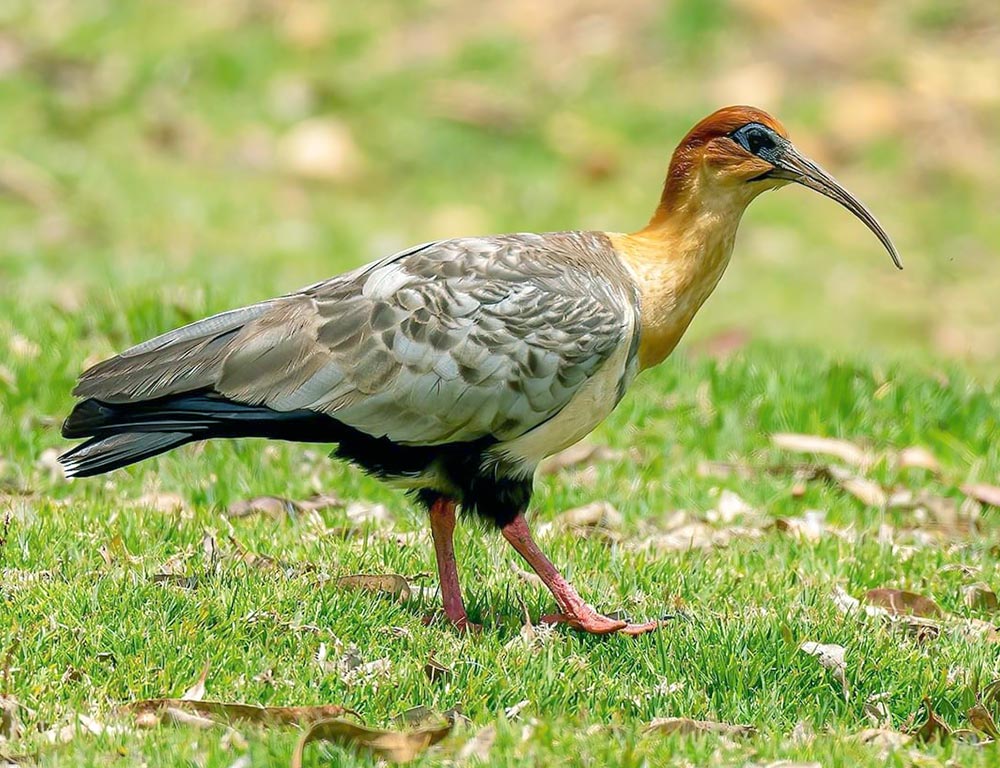
- Scientific Name: Theristicus melanopis
- Population: Native to South America, primarily in the Andes region
- Life Span: Around 20 years
- Size: Approximately 71-76 cm in length
- Weight: About 1.3 kg
- Food: Omnivorous diet including insects, small vertebrates, and plant matter
- Status: Least Concern
The Black-faced Ibis is a distinctive bird with a dark face, white neck, and black and iridescent plumage. Found in the high-altitude regions of the Andes, these ibises prefer grasslands and agricultural areas.
They are often seen foraging in pairs or small groups. Black-faced Ibises are known for their strong, direct flight and agile foraging techniques.
Their adaptability to varied altitudes and habitats in the Andes showcases their ecological flexibility. Conservation efforts should focus on preserving their natural habitats, which may face challenges due to agricultural expansion and climate change.
5. Black Ibis
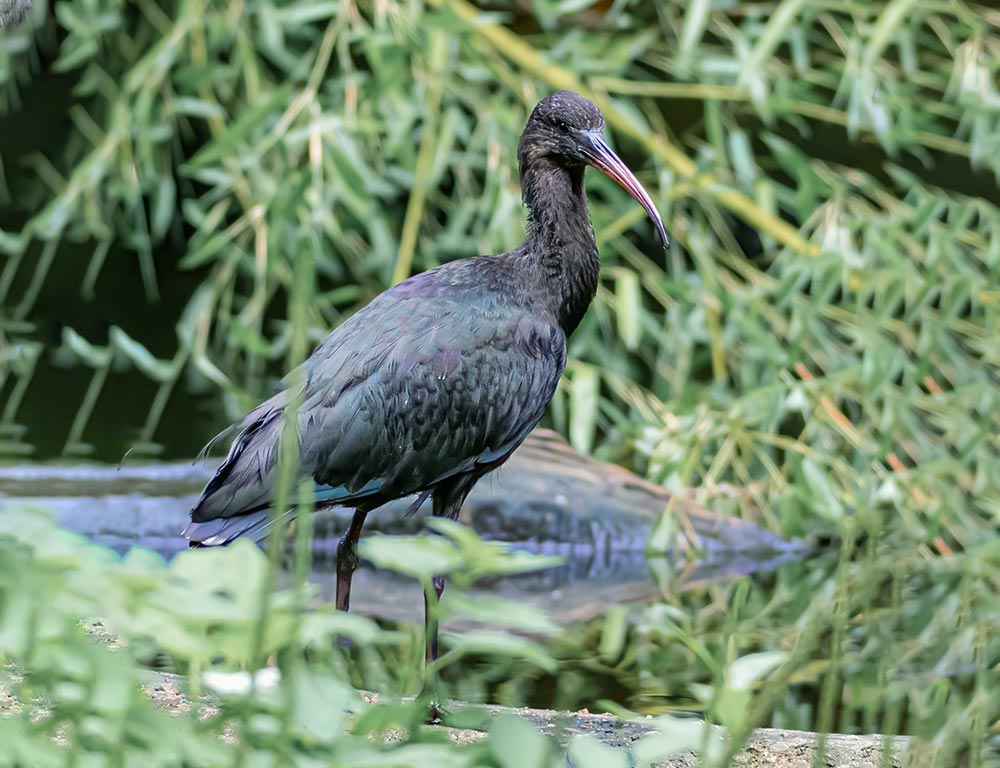
- Scientific Name: Pseudibis papillosa
- Population: Found in South and Southeast Asia
- Life Span: Around 20 years
- Size: Approximately 65-75 cm in length
- Weight: About 1.4 kg
- Food: Omnivorous, feeding on small mammals, insects, crustaceans, and aquatic plants
- Status: Near Threatened
The Black Ibis, also known as the Red-naped Ibis, is characterized by its glossy black plumage and a distinctive red patch on its nape. It is commonly found near water bodies like lakes and marshes.
These ibises are known for their probing bills, which they use to search for food in mud and shallow water.
Black Ibises often forage in pairs or small groups. Their near-threatened status highlights the importance of conservation efforts to protect their habitats and address potential threats such as habitat loss and pollution.
6. Buff-necked Ibis
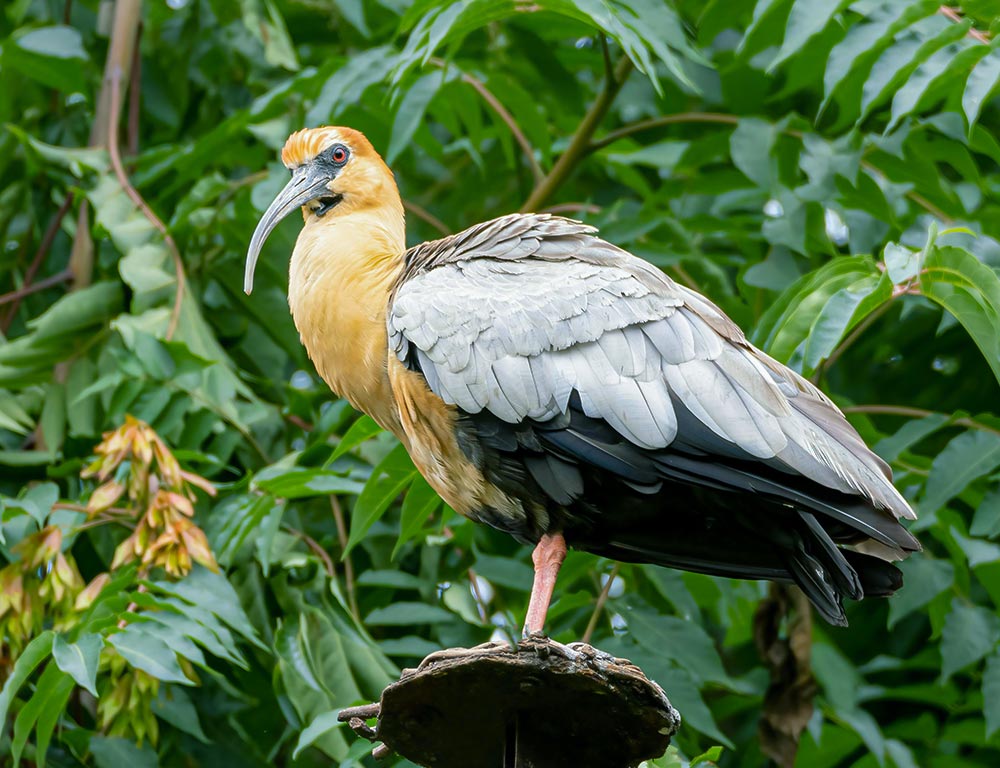
- Scientific Name: Theristicus caudatus
- Population: Native to South America, particularly in the Andes region
- Life Span: Around 20 years
- Size: Approximately 68-76 cm in length
- Weight: About 1.3 kg
- Food: Omnivorous, consuming insects, small vertebrates, and plant matter
- Status: Least Concern
The Buff-necked Ibis, with its distinctive buff-colored neck and face, is a large bird native to the Andes region in South America. These ibises inhabit grasslands, wetlands, and agricultural areas.
They are often seen foraging in pairs or small groups, using their long bills to probe for insects and other prey. Buff-necked Ibises are known for their striking appearance and are adaptable to a variety of habitats.
Conservation efforts should focus on preserving their natural environments and addressing potential threats such as habitat destruction and agricultural expansion.
7. Cattle Egret
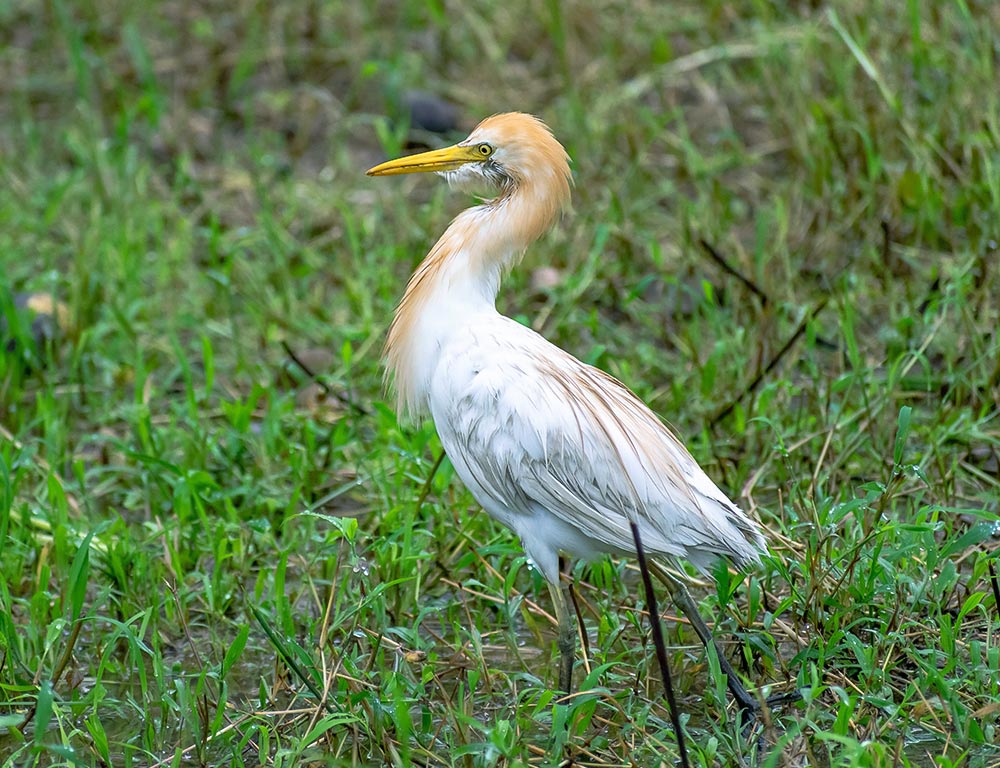
- Scientific Name: Bubulcus ibis
- Population: Widespread, found in many parts of the world
- Life Span: Around 10 years
- Size: Approximately 46-56 cm in length
- Weight: About 270-512 grams
- Food: Opportunistic feeders, consuming insects, small vertebrates, and sometimes foraging in association with cattle
- Status: Least Concern
The Cattle Egret is a small, white egret with a compact appearance and yellow-orange plumes during the breeding season.
Known for its association with livestock, these egrets often forage near cattle, taking advantage of disturbed insects.
They can be found in a variety of habitats, including grasslands, wetlands, and agricultural fields. Cattle Egrets exhibit colonial nesting behavior, often nesting in mixed-species colonies.
Their adaptability to diverse environments and feeding habits has contributed to their global distribution. Conservation efforts should focus on preserving their nesting sites and ensuring the sustainability of their foraging habitats.
8. Glossy Ibis
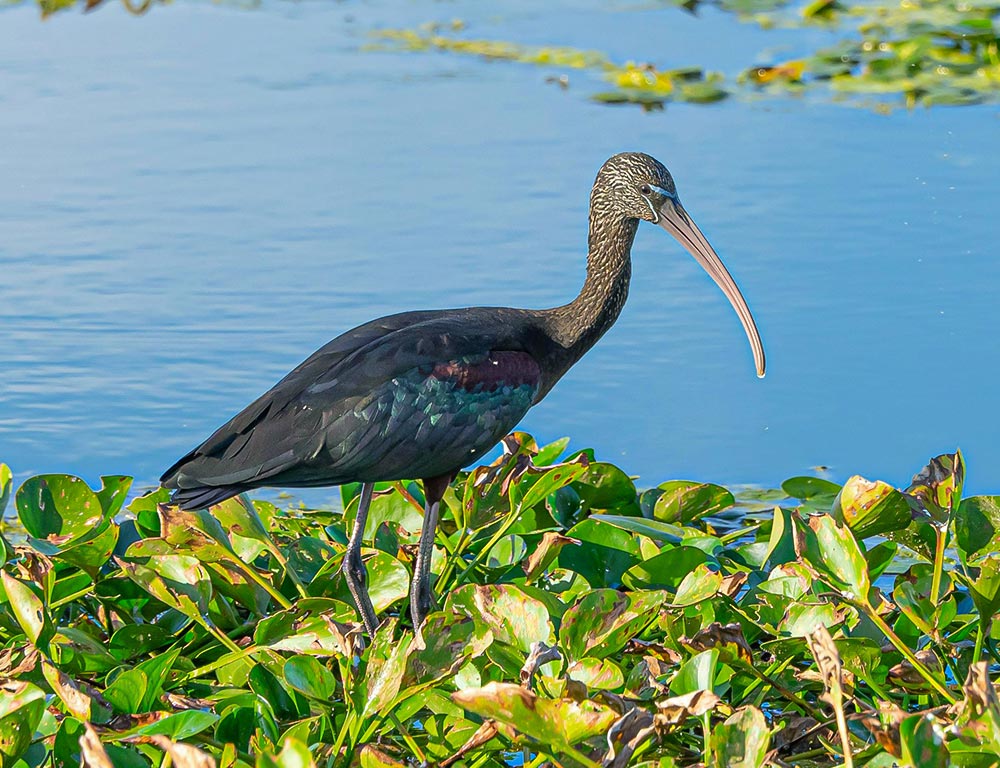
- Scientific Name: Plegadis falcinellus
- Population: Global distribution, found in Europe, Africa, Asia, the Americas, and Australia
- Life Span: Around 15 years
- Size: Approximately 55-65 cm in length
- Weight: About 0.6-0.7 kg
- Food: Feeds on aquatic invertebrates, small fish, and amphibians
- Status: Least Concern
The Glossy Ibis is named for its stunning iridescent plumage that appears glossy in sunlight. Found in a variety of wetland habitats, these ibises are skilled foragers, using their long, curved bills to probe for food in the mud and shallow water.
They often form loose colonies during the breeding season. Glossy Ibises are highly migratory and adapt to different climates and habitats.
Their global distribution underscores their ability to thrive in various environments. Conservation efforts should prioritize the protection of wetland ecosystems and address potential threats such as habitat loss and pollution.
9. Green Ibis

- Scientific Name: Mesembrinibis cayennensis
- Population: Native to Central and South America
- Life Span: Information not widely available
- Size: Approximately 55-65 cm in length
- Weight: About 0.8 kg
- Food: Omnivorous, feeding on small vertebrates, insects, and plant matter
- Status: Least Concern
The Green Ibis is characterized by its unique greenish-black plumage and long, downward-curving bill. These ibises are typically found in swampy areas, marshes, and forested regions.
They are known for their secretive behavior and are often difficult to spot in their natural habitats. Green Ibises are considered the least concern in terms of conservation status.
However, as with many species, ongoing monitoring and habitat protection is crucial to ensure the continued well-being of their populations, particularly in the face of potential threats such as habitat degradation.
10. Hadada Ibis
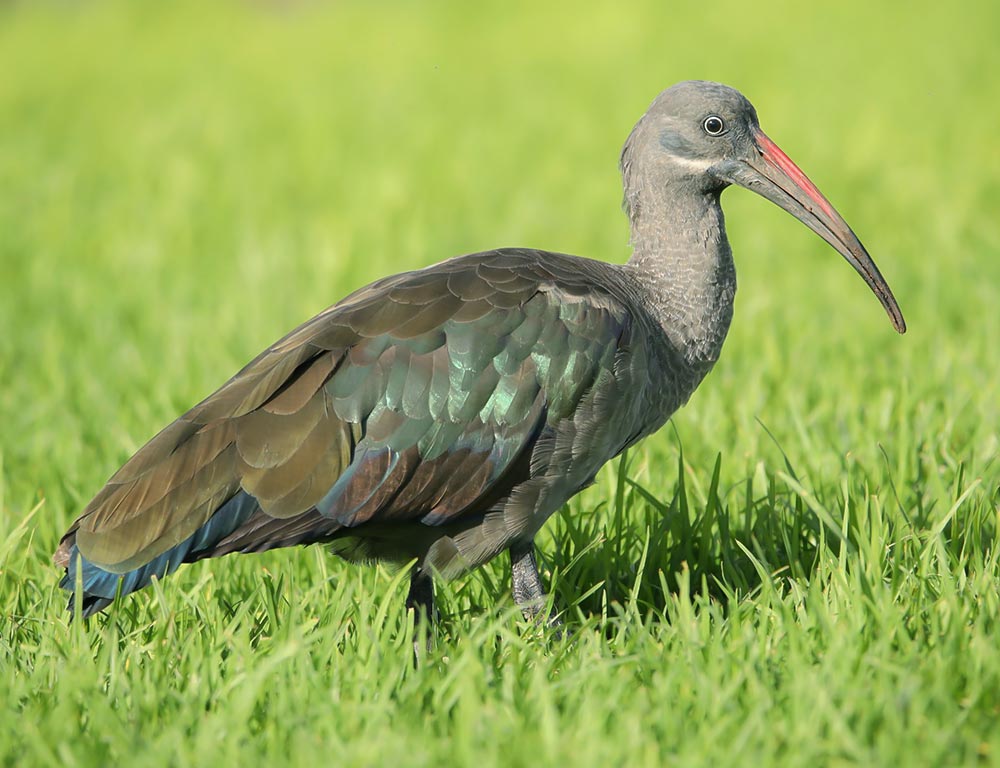
- Scientific Name: Bostrychia hagedash
- Population: Common in sub-Saharan Africa
- Life Span: Around 10 years
- Size: Approximately 76 cm in length
- Weight: About 1 kg
- Food: Omnivorous, feeding on insects, small vertebrates, and plant matter
- Status: Least Concern
The Hadada Ibis is known for its distinct, loud call that sounds like “ha-haa, ha-de-da.” These ibises are often found near water, foraging for food in wetlands, grasslands, and cultivated areas.
They have a distinctive appearance with a long, curved bill and dark plumage. Hadada Ibises are social birds, often seen in small groups or larger flocks.
They are adaptable to various habitats, including urban areas. Conservation efforts should focus on preserving their wetland habitats and addressing potential threats such as pollution and habitat loss.
11. Limpkin
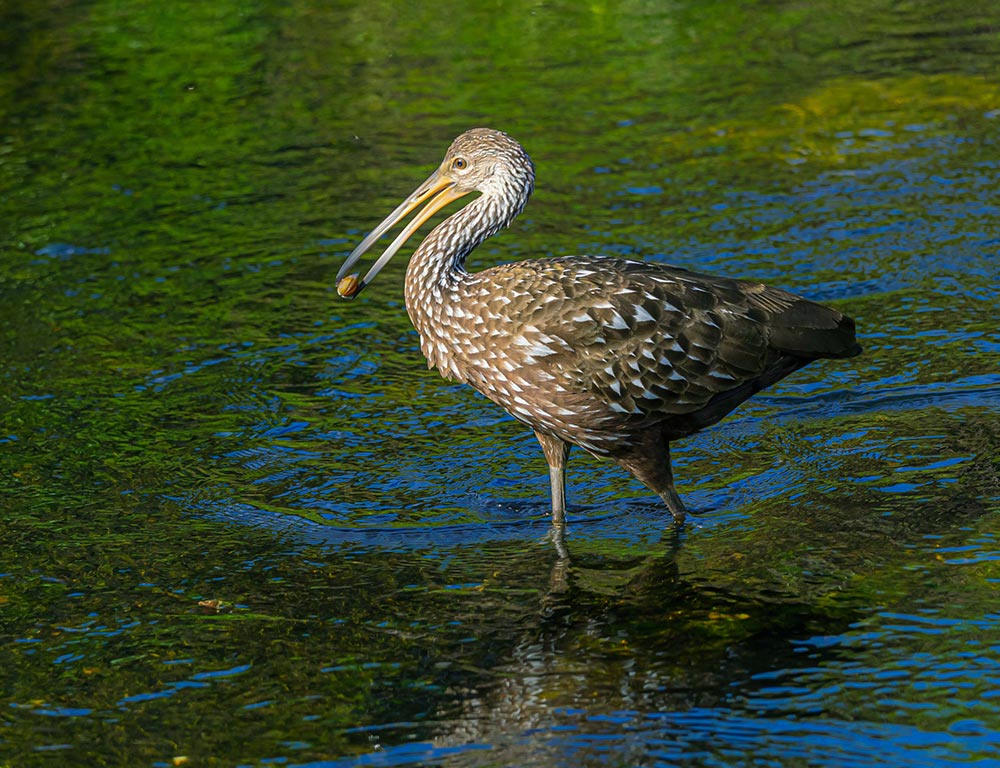
- Scientific Name: Aramus guarauna
- Population: Native to the Americas, from the southeastern United States to Argentina
- Life Span: Around 10 years
- Size: Approximately 66-76 cm in length
- Weight: About 0.9-1.4 kg
- Food: Primarily feeds on apple snails, also consumes small vertebrates and insects
- Status: Least Concern
The Limpkin, also known as the “crying bird” due to its haunting wailing calls, is often associated with freshwater habitats. These large waders have a distinctive appearance with a long neck, slender body, and straight bill.
They are well adapted to foraging in aquatic environments, using their bills to extract snails from their shells. Limpkins are generally solitary birds, and their populations are stable.
Conservation efforts should prioritize the protection of freshwater habitats, as they are crucial for the Limpkin’s survival. Addressing threats such as habitat destruction and water pollution is essential for their continued well-being.
12. Madagascar Ibis
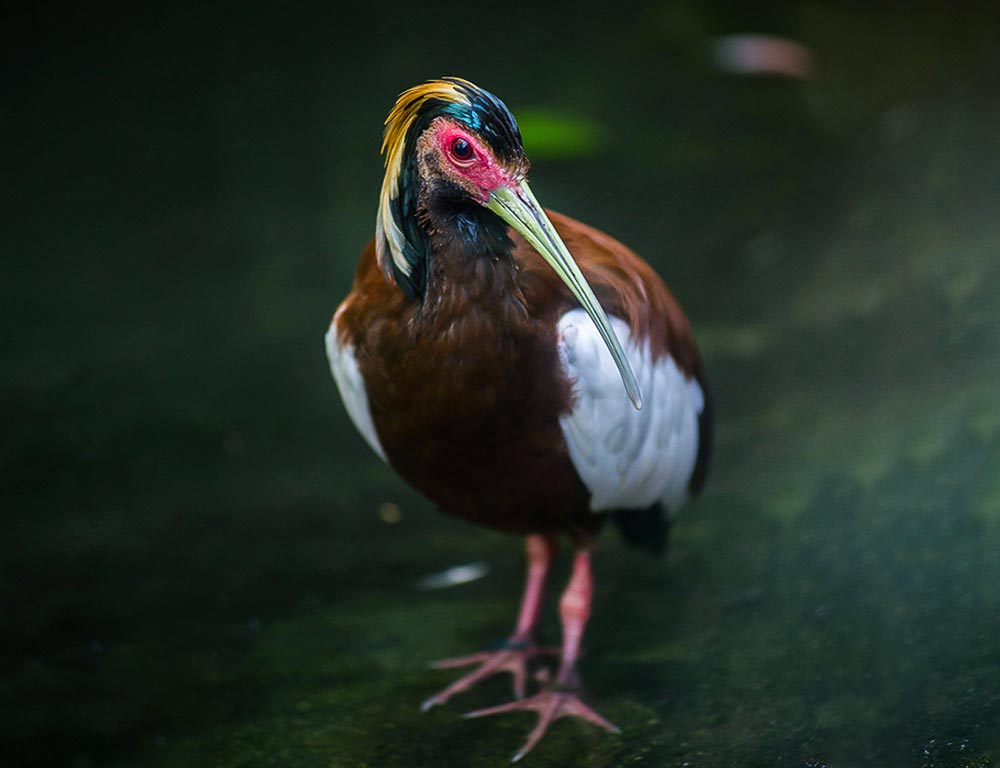
- Scientific Name: Lophotibis cristata
- Population: Endemic to Madagascar
- Life Span: Information not widely available
- Size: Approximately 50-60 cm in length
- Weight: About 0.6-0.7 kg
- Food: Omnivorous, consuming small vertebrates, insects, and plant matter
- Status: Vulnerable
The Madagascar Ibis is a unique and endemic species found only in Madagascar. It has distinctive plumage with a white crest on its head. These ibises inhabit various forested habitats, including rainforests and dry deciduous forests.
They are known for their secretive behavior and are often difficult to observe in the wild. Madagascar Ibises are listed as vulnerable due to habitat loss and degradation caused by deforestation.
Conservation efforts should focus on protecting their remaining habitats and addressing the underlying causes of habitat destruction, such as logging and agricultural expansion.
13. Northern Bald Ibis
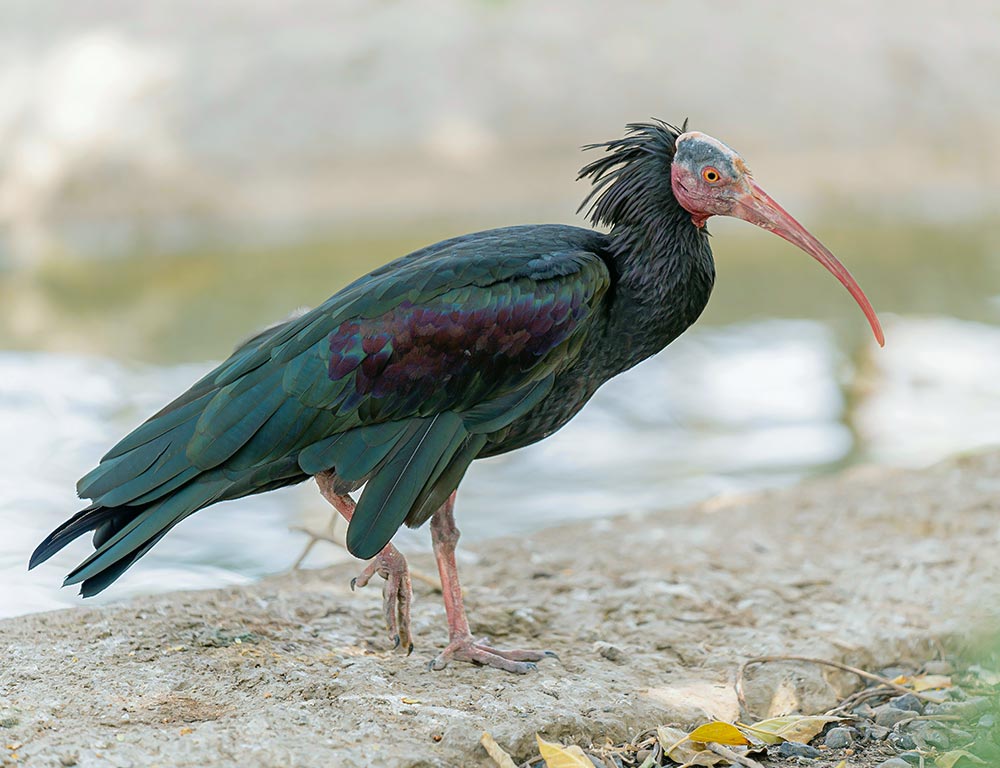
- Scientific Name: Geronticus eremita
- Population: Found in North Africa, the Middle East, and parts of Europe
- Life Span: Around 20 years
- Size: Approximately 70-80 cm in length
- Weight: About 1 kg
- Food: Feeds on insects, small vertebrates, and plant matter
- Status: Endangered
The Northern Bald Ibis is characterized by its bare red face and long, slender bill. These ibises were once widespread but are now limited to a few relict populations.
They are known for their migratory behavior, traveling long distances between breeding and wintering grounds.
Northern Bald Ibises face threats such as habitat loss, disturbance, and hunting, leading to their endangered status. Conservation efforts include habitat restoration, captive breeding programs, and addressing factors contributing to their decline.
14. Olive Ibis
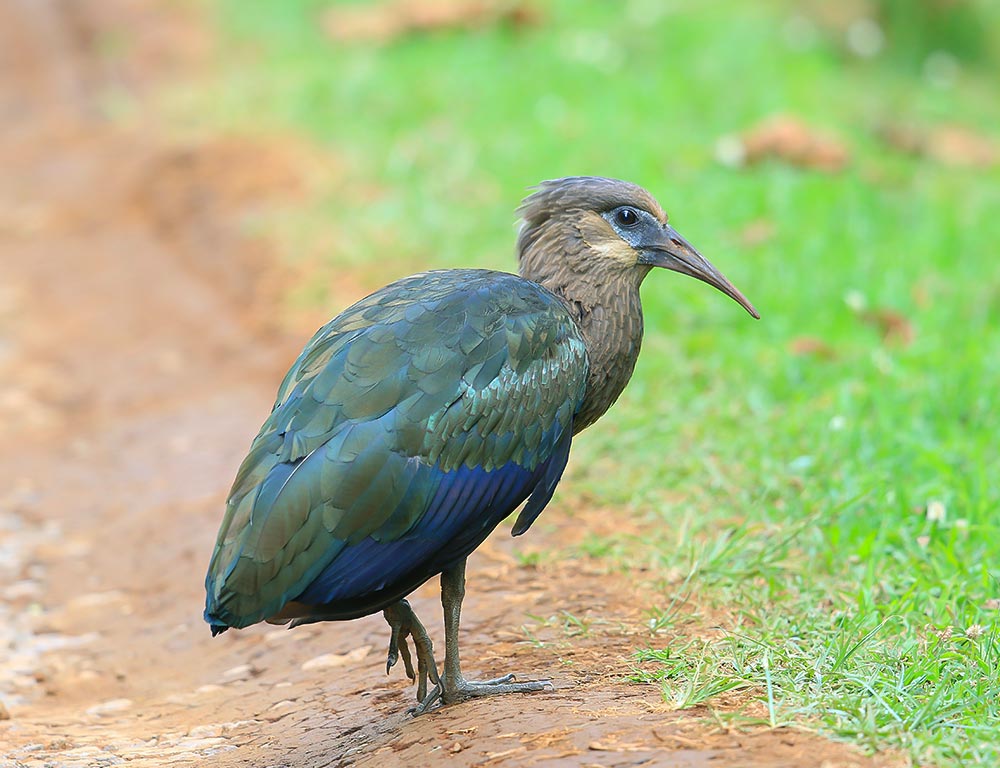
- Scientific Name: Bostrychia olivacea
- Population: Native to sub-Saharan Africa
- Life Span: Information not widely available
- Size: Approximately 55-65 cm in length
- Weight: About 0.8 kg
- Food: Omnivorous, feeding on insects, small vertebrates, and plant matter
- Status: Least Concern
The Olive Ibis, also known as the Olive-headed Ibis, has olive-brown plumage and a distinctive olive-green head. These ibises are typically found in wetlands, marshes, and other aquatic habitats.
They are skilled foragers, using their long bills to probe for food in mud and shallow water. Olive Ibises are considered the least concern in terms of conservation status.
However, ongoing monitoring and habitat protection is crucial to ensure their continued well-being, particularly in the face of potential threats such as habitat degradation and pollution.
15. Plumbeous Ibis
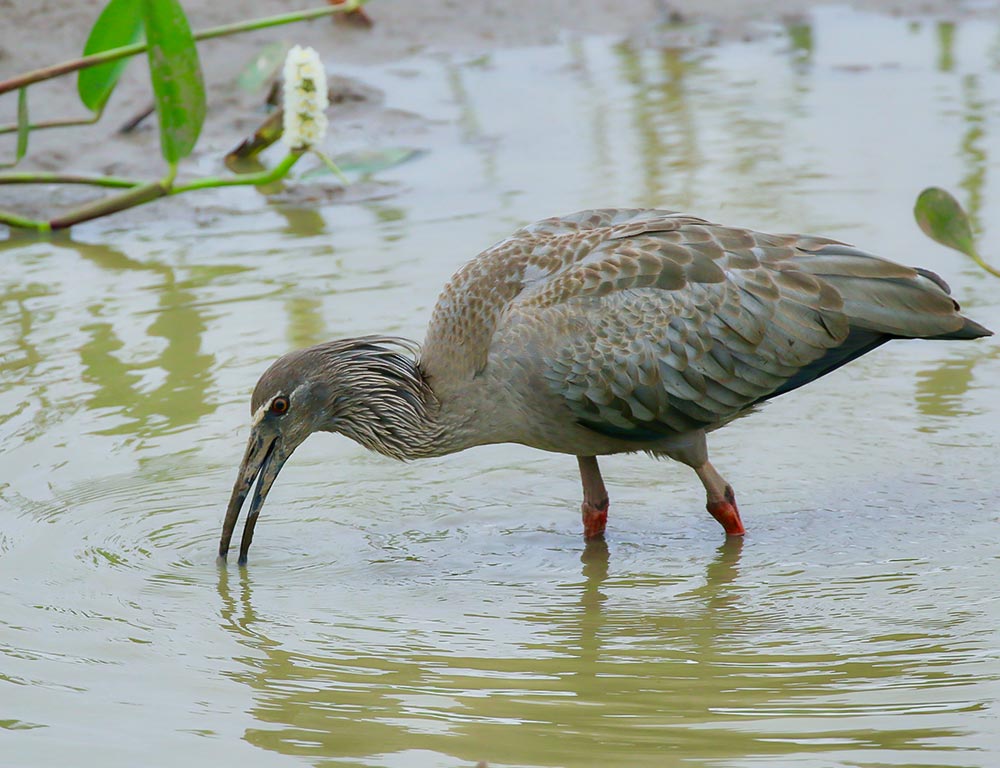
- Scientific Name: Theristicus caerulescens
- Population: Native to South America, particularly in the Andes region
- Life Span: Around 15 years
- Size: Approximately 70-80 cm in length
- Weight: About 1.3 kg
- Food: Omnivorous, feeding on insects, small vertebrates, and plant matter
- Status: Least Concern
The Plumbeous Ibis is characterized by its plumbeous (lead-colored) or bluish-gray plumage and a long, down-curved bill.
These ibises inhabit various habitats, including grasslands, wetlands, and agricultural areas. They are often seen foraging in pairs or small groups, probing the soil for insects and small animals.
Plumbeous Ibises play a role in maintaining ecological balance by controlling insect populations. Their adaptability to different environments and social behaviors contributes to their least concern conservation status.
16. Red-naped Ibis
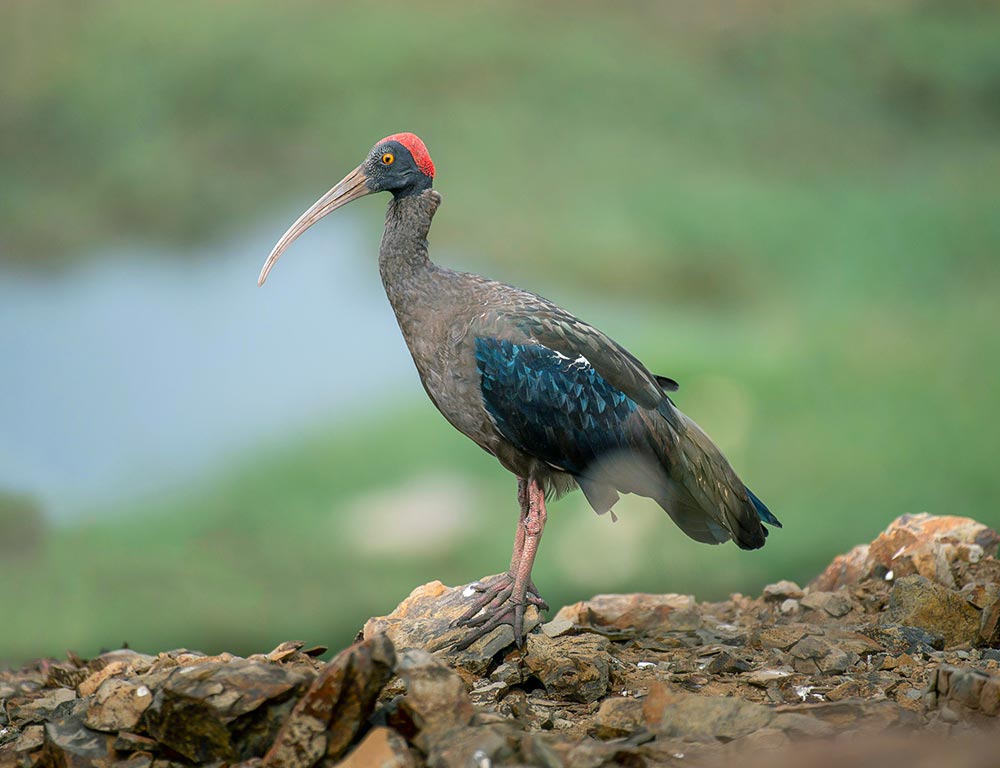
- Scientific Name: Pseudibis papillosa
- Population: Found in South and Southeast Asia
- Life Span: Around 20 years
- Size: Approximately 65-75 cm in length
- Weight: About 1.4 kg
- Food: Omnivorous, feeding on small mammals, insects, crustaceans, and aquatic plants
- Status: Near Threatened
The Red-naped Ibis, also known as the Black Ibis, is known for its glossy black plumage and a distinctive red patch on its nape. It is commonly found near water bodies like lakes and marshes.
These ibises are skilled foragers, using their long bills to probe for food in mud and shallow water. Red-naped Ibises often forage in pairs or small groups.
Their near-threatened status highlights the importance of conservation efforts to protect their habitats and address potential threats such as habitat loss and pollution.
17. Red-and-black Ibis
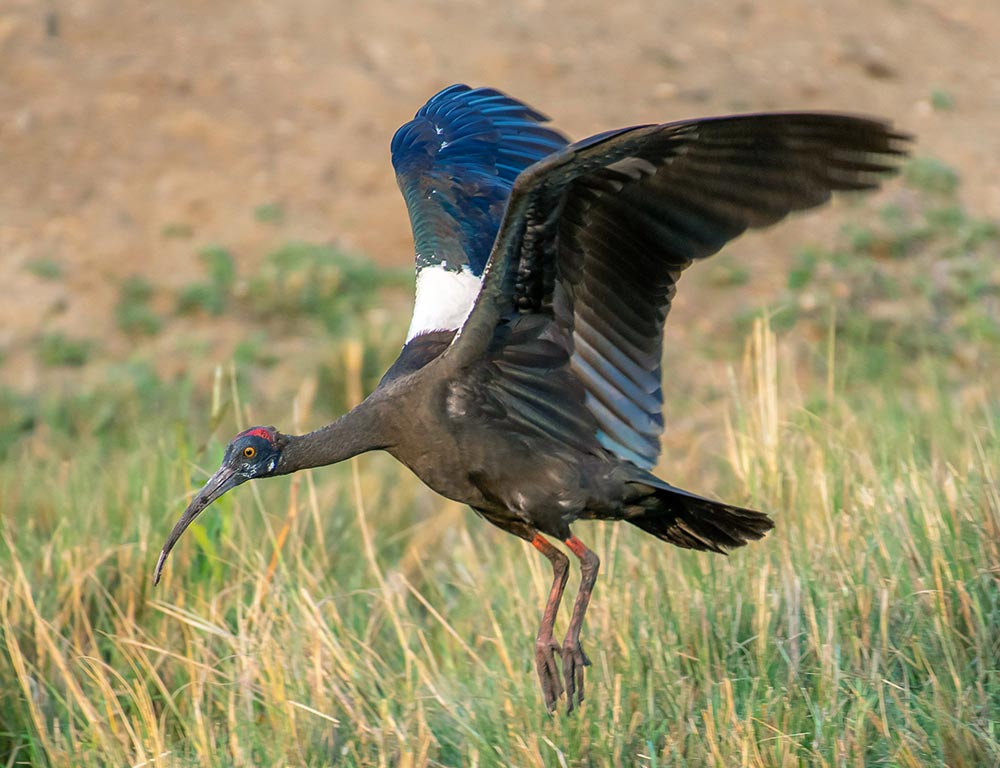
- Scientific Name: Theristicus caudatus
- Population: Native to South America, particularly in the Andes region
- Life Span: Around 20 years
- Size: Approximately 68-76 cm in length
- Weight: About 1.3 kg
- Food: Omnivorous, consuming insects, small vertebrates, and plant matter
- Status: Least Concern
The Red-and-black Ibis, also known as the Buff-necked Ibis, is characterized by its buff-colored neck and face and glossy black plumage.
Found in the high-altitude regions of the Andes, these ibises prefer grasslands and agricultural areas. They are often seen foraging in pairs or small groups. Red-and-black Ibises are known for their adaptability to various altitudes and habitats.
Conservation efforts should focus on preserving their natural environments and addressing potential threats such as habitat destruction and agricultural expansion.
18. Red Ibis
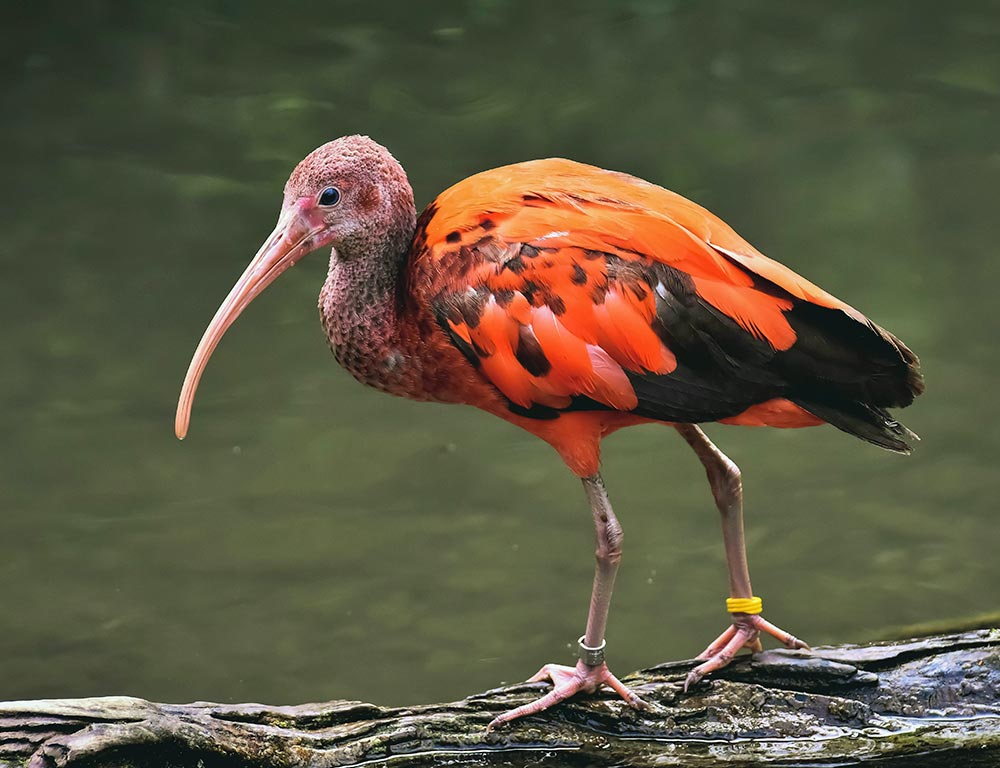
- Scientific Name: Eudocimus ruber
- Population: Native to South America and the Caribbean
- Life Span: Around 15 years
- Size: Approximately 56-61 cm in length
- Weight: About 1 kg
- Food: Feeds on crustaceans, insects, and small fish
- Status: Least Concern
The Red Ibis, also known as the Scarlet Ibis, is famous for its vibrant red plumage. These ibises inhabit coastal areas, mangroves, and mudflats.
Their striking appearance is due to the pigments in the crustaceans they consume, giving them their intense red coloration. Red Ibises are social birds, often seen in flocks.
They are skilled waders and use their long bills to probe for food in mud and shallow water. Despite being the least concerned in terms of conservation status, habitat protection remains crucial for their well-being.
19. Scarlet Ibis
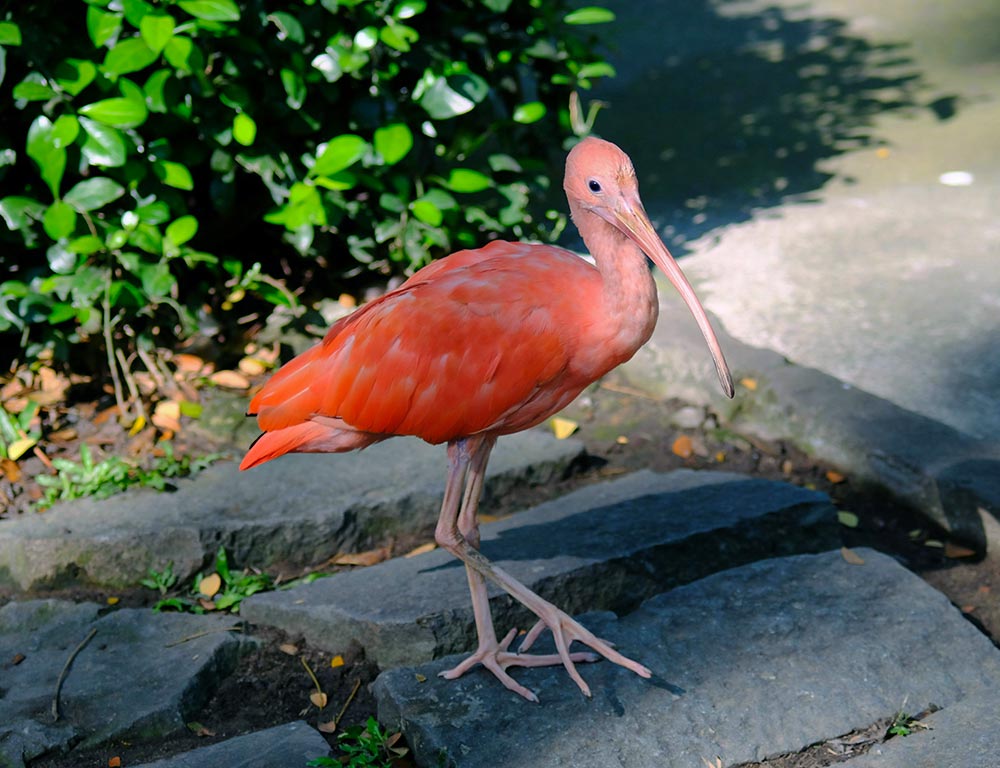
- Scientific Name: Eudocimus ruber
- Population: Native to South America and the Caribbean
- Life Span: Around 15 years
- Size: Approximately 56-61 cm in length
- Weight: About 1 kg
- Food: Feeds on crustaceans, insects, and small fish
- Status: Least Concern
The Scarlet Ibis, synonymous with the Red Ibis, is renowned for its breathtakingly vivid scarlet plumage.
Found in coastal regions, mangroves, and mudflats, these ibises showcase one of the most striking colorations among bird species. Their color is a result of their diet, rich in pigments from crustaceans.
Scarlet Ibises are social birds, often seen in colonies. Their adaptability to diverse coastal environments and their role in controlling crustacean populations underscore their ecological significance.
Conservation efforts should emphasize the protection of their habitats and address potential threats such as habitat degradation and pollution.
20. Sharp-tailed Ibis
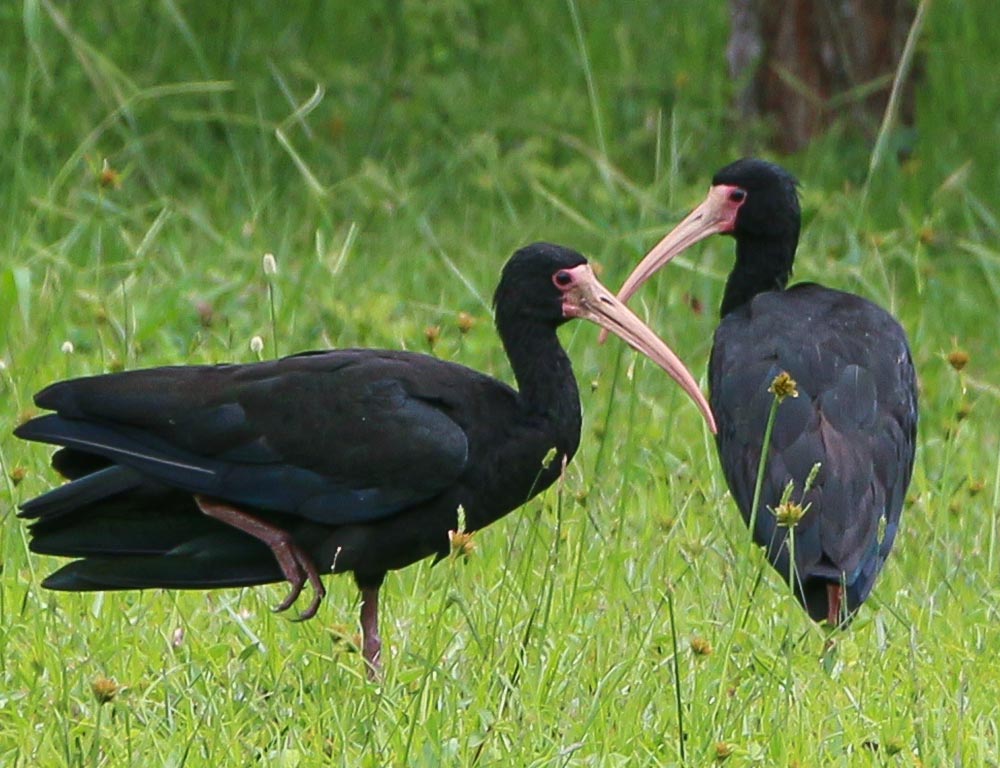
- Scientific Name: Cercibis oxycerca
- Population: Native to South America, particularly in the Amazon Basin
- Life Span: Information not widely available
- Size: Approximately 71-76 cm in length
- Weight: About 1.2 kg
- Food: Omnivorous, feeding on insects, small vertebrates, and plant matter
- Status: Least Concern
The Sharp-tailed Ibis, also known as the Straight-billed Ibis, is characterized by its long, straight bill and distinctive plumage.
These ibises are typically found in wetlands, marshes, and flooded grasslands. They use their bills to probe for food in mud and shallow water. Sharp-tailed Ibises are social birds, often seen in small groups or flocks.
Their adaptability to diverse wetland habitats contributes to their least concern conservation status. Conservation efforts should focus on preserving wetland ecosystems and addressing potential threats such as habitat loss.
21. Straw-necked Ibis
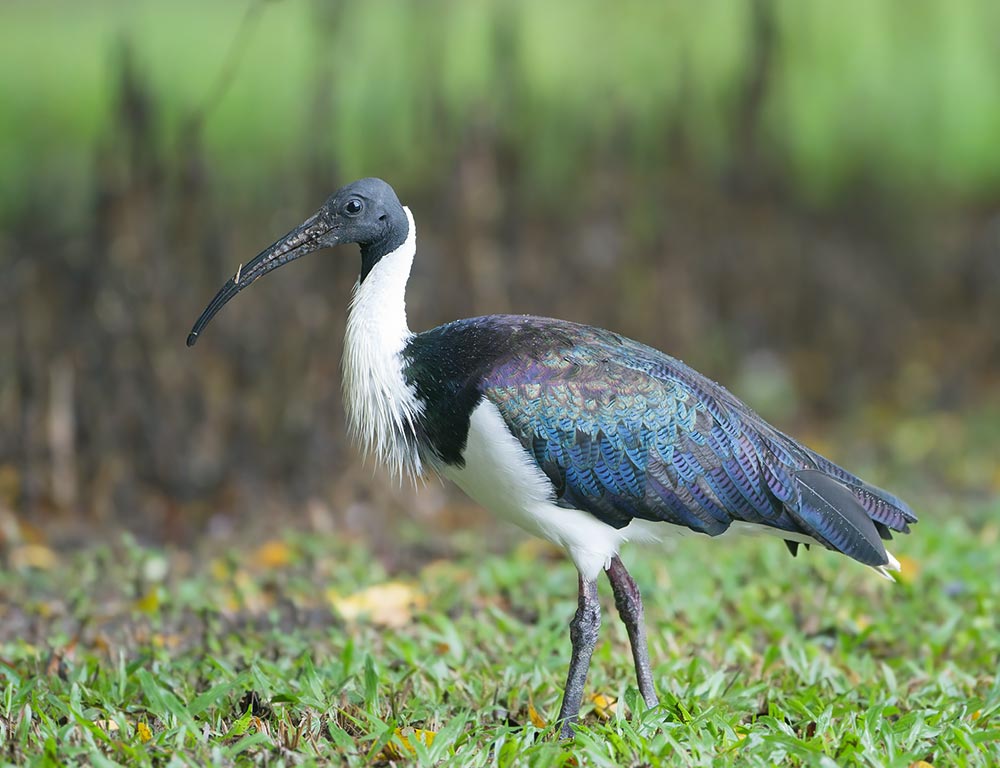
- Scientific Name: Threskiornis spinicollis
- Population: Native to Australia, New Guinea, and nearby islands
- Life Span: Around 10 years
- Size: Approximately 65-75 cm in length
- Weight: About 1 kg
- Food: Omnivorous, feeding on insects, small vertebrates, and plant matter
- Status: Least Concern
The Straw-necked Ibis is named for its distinctive straw-colored neck. These ibises are often found in a variety of habitats, including grasslands, wetlands, and urban areas.
They are known for their scavenging behavior, foraging for food in agricultural fields and open areas. Straw-necked Ibises are highly social, forming large flocks during the non-breeding season.
Their adaptability to human-altered environments has contributed to their widespread distribution. Conservation efforts should focus on addressing potential threats such as habitat degradation and pesticide exposure.
22. African Sacred Ibis

- Scientific Name: Threskiornis Aethiopicus
- Population: widely distributed in sub-Saharan Africa and parts of the Middle East
- Life Span: Up to 20 years
- Size: Approximately 68-80 cm in length
- Weight: Around 1.2 kg
- Food: Omnivorous diet including fish, insects, small mammals, and amphibians
- Status: Least Concern
The African Sacred Ibis is a distinctive bird with white plumage, contrasting black edges on its wings, and a long, downward-curved bill.
Despite its name, it is not considered sacred in the religious sense, but it has been associated with religious symbolism in various cultures. These ibises are highly adaptable and can be found in a range of habitats, from natural wetlands to urban areas.
African Sacred Ibises are known for their synchronized soaring V-shaped formations during flight. They form large breeding colonies, using trees, cliffs, or other elevated locations for nesting.
Their ability to thrive in diverse environments and their important role in maintaining ecological balance highlight the significance of conservation efforts to protect their habitats and address potential threats such as habitat loss and human disturbance.
23. Waldrapp
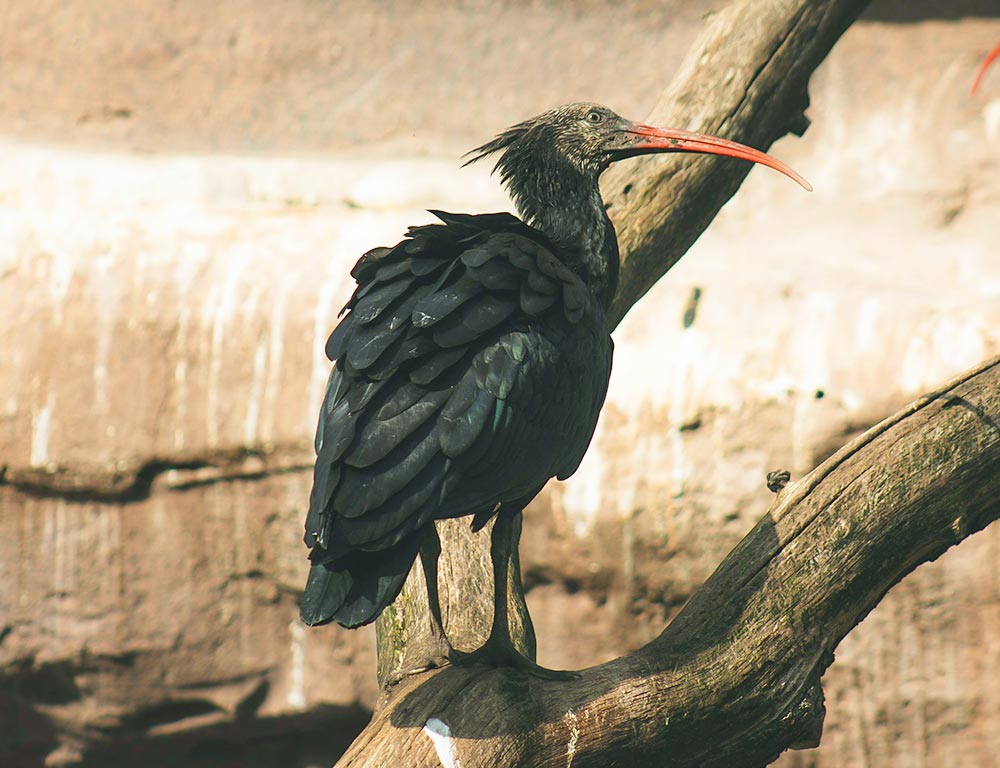
- Scientific Name: Geronticus eremita
- Population: Found in North Africa, the Middle East, and parts of Europe
- Life Span: Around 20 years
- Size: Approximately 70-80 cm in length
- Weight: About 1 kg
- Food: Feeds on insects, small vertebrates, and plant matter
- Status: Endangered
The Waldrapp, also known as the Northern Bald Ibis, is characterized by its bare red face and long, slender bill.
These ibises were once widespread but are now limited to a few relict populations. They are known for their migratory behavior, traveling long distances between breeding and wintering grounds.
Waldrapps face threats such as habitat loss, disturbance, and hunting, leading to their endangered status. Conservation efforts include habitat restoration, captive breeding programs, and addressing factors contributing to their decline.
24. Wattled Ibis
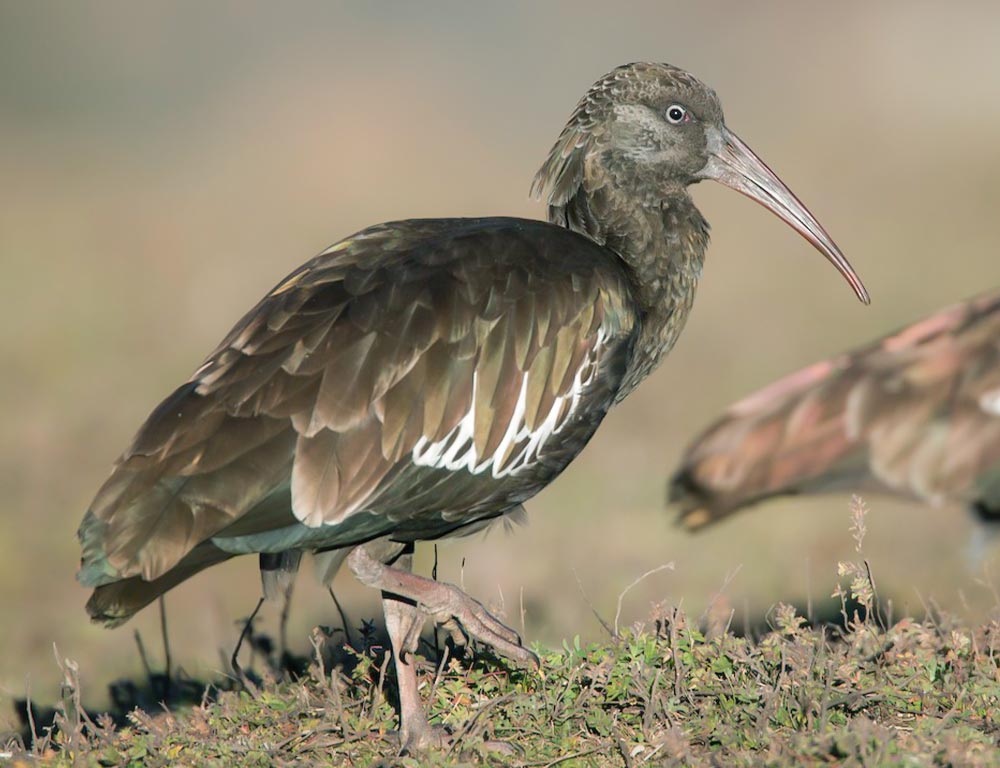
- Scientific Name: Bostrychia carunculata
- Population: Native to sub-Saharan Africa
- Life Span: Information not widely available
- Size: Approximately 55-65 cm in length
- Weight: About 0.8 kg
- Food: Omnivorous, feeding on insects, small vertebrates, and plant matter
- Status: Least Concern
The Wattled Ibis is characterized by the distinctive wattle hanging from its throat. These ibises inhabit a range of habitats, including grasslands, wetlands, and agricultural areas.
They are known for their foraging behavior, using their long bills to probe for food in mud and shallow water. Wattled Ibises are considered the least concern in terms of conservation status.
However, ongoing monitoring and habitat protection is crucial to ensure their continued well-being, particularly in the face of potential threats such as habitat degradation and pollution.
25. White-faced Ibis
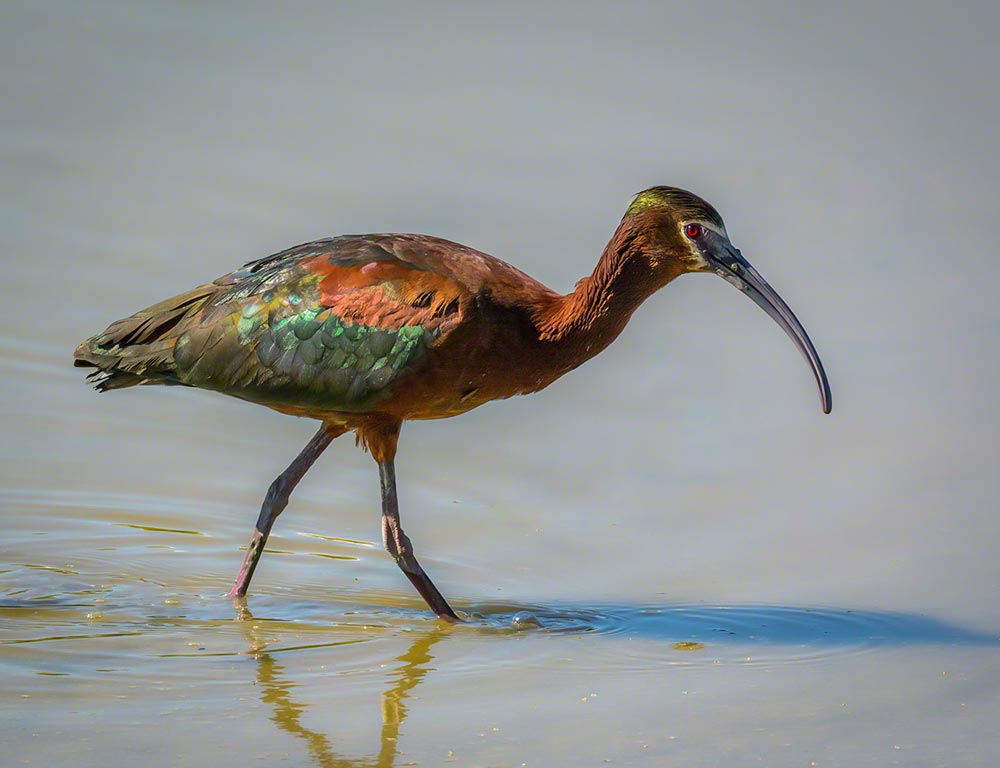
- Scientific Name: Plegadis chihi
- Population: Native to the Americas
- Life Span: Around 15 years
- Size: Approximately 56-66 cm in length
- Weight: About 650 grams
- Food: Omnivorous, feeding on insects, small vertebrates, and aquatic invertebrates
- Status: Least Concern
The White-faced Ibis is characterized by its iridescent plumage and distinctive white face during the breeding season.
These ibises are often found in wetlands, marshes, and flooded areas. They use their long, curved bills to probe for food in mud and shallow water. White-faced Ibises are social birds, typically seen in flocks.
Their adaptability to various wetland habitats contributes to their least concern conservation status. Conservation efforts should focus on preserving wetland ecosystems and addressing potential threats such as habitat loss.
26. White Ibis
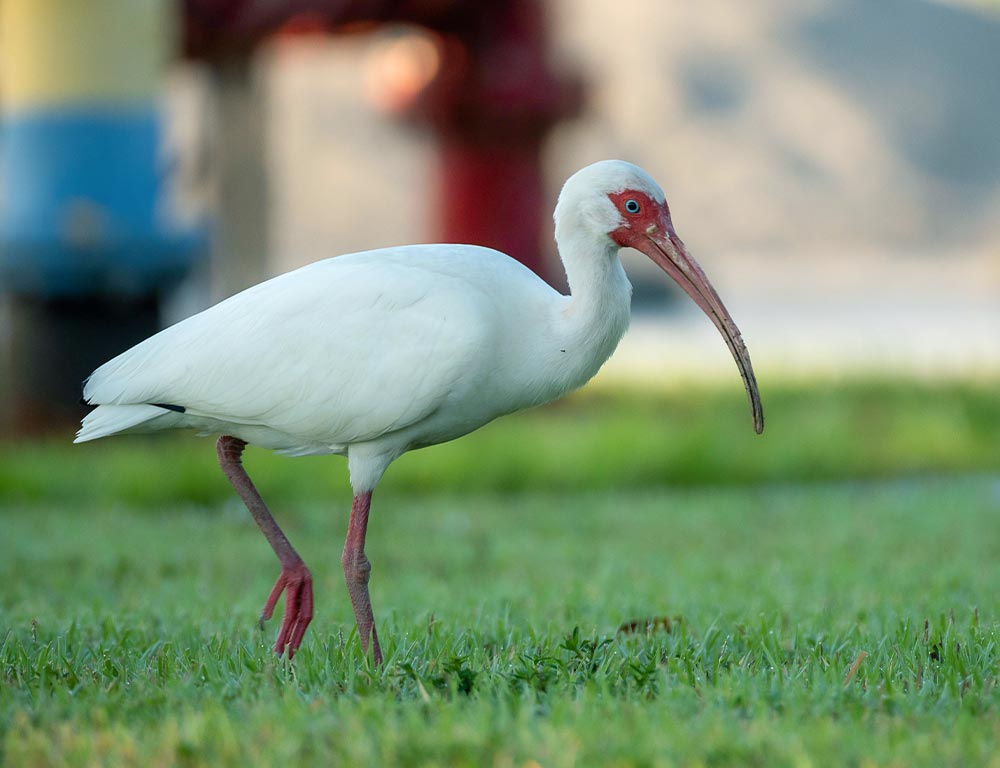
- Scientific Name: Eudocimus albus
- Population: Native to the Americas
- Life Span: Around 16 years
- Size: Approximately 56-66 cm in length
- Weight: About 750 grams
- Food: Opportunistic feeder, consuming small vertebrates, insects, and crustaceans
- Status: Least Concern
The White Ibis is known for its predominantly white plumage and long, curved bill. These ibises inhabit a variety of coastal and inland habitats, including marshes, swamps, and estuaries.
They are often seen probing the mud for prey. White Ibises are social birds, often seen in flocks, and they are known for their distinctive, high-pitched calls.
Their adaptability to various environments contributes to their least concern conservation status. Conservation efforts should focus on protecting their habitats and addressing potential threats such as habitat degradation and pollution.
27. White-shouldered Ibis
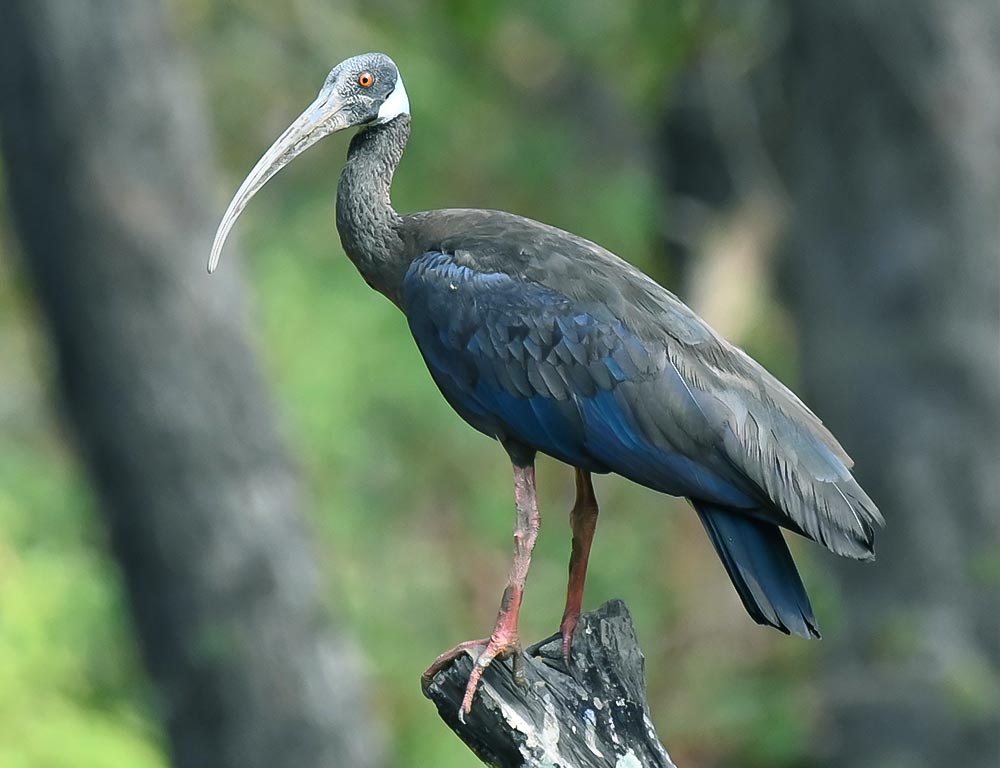
- Scientific Name: Pseudibis davisoni
- Population: Found in Southeast Asia
- Life Span: Information not widely available
- Size: Approximately 65-75 cm in length
- Weight: About 1.5 kg
- Food: Omnivorous, feeding on insects, small vertebrates, and plant matter
- Status: Endangered
The White-shouldered Ibis is characterized by its white shoulders and neck, contrasting with dark plumage on the rest of its body. These ibises are typically found in wetlands, marshes, and agricultural areas.
They use their long bills to probe for food in mud and shallow water. White-shouldered Ibises are listed as endangered due to habitat loss, hunting, and disturbance.
Conservation efforts should focus on protecting their remaining habitats, addressing the factors contributing to their decline, and implementing captive breeding programs.
28. Yellow-billed Ibis
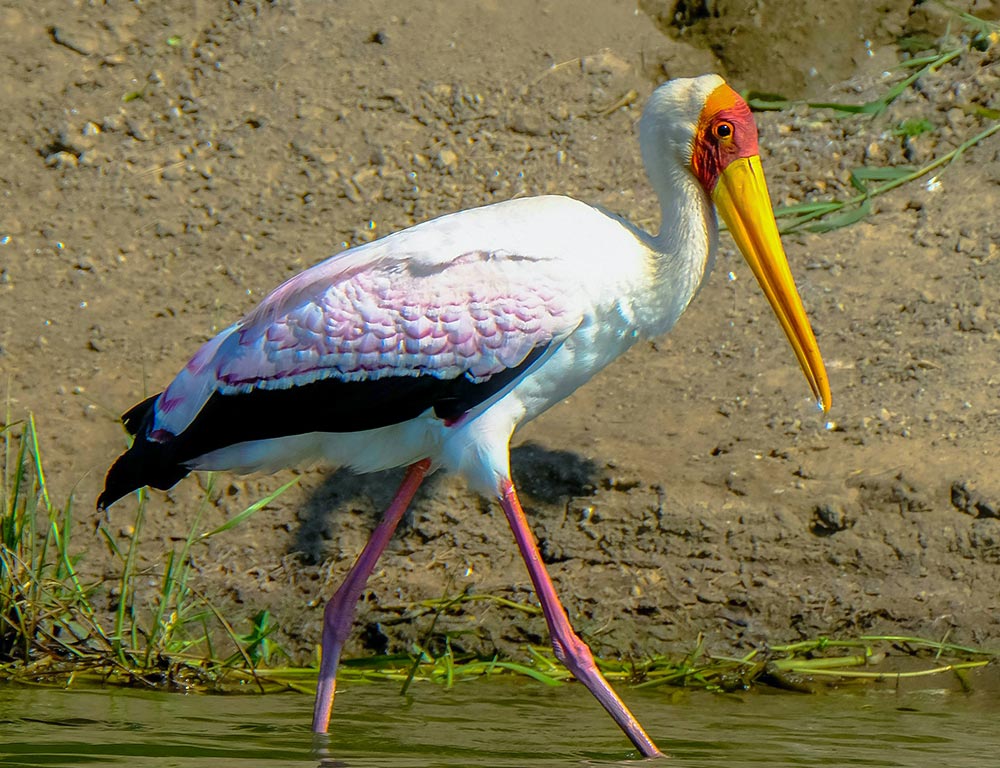
- Scientific Name: Theristicus caudatus
- Population: Native to South America, particularly in the Andes region
- Life Span: Around 20 years
- Size: Approximately 68-76 cm in length
- Weight: About 1.3 kg
- Food: Omnivorous, consuming insects, small vertebrates, and plant matter
- Status: Least Concern
The Yellow-billed Ibis, also known as the Buff-necked Ibis, is characterized by its buff-colored neck and face and glossy black plumage.
Found in the high-altitude regions of the Andes, these ibises prefer grasslands and agricultural areas.
They are often seen foraging in pairs or small groups. Yellow-billed Ibises are known for their adaptability to various altitudes and habitats.
Conservation efforts should focus on preserving their natural environments and addressing potential threats such as habitat destruction and agricultural expansion.
29. Yellow-billed Stork
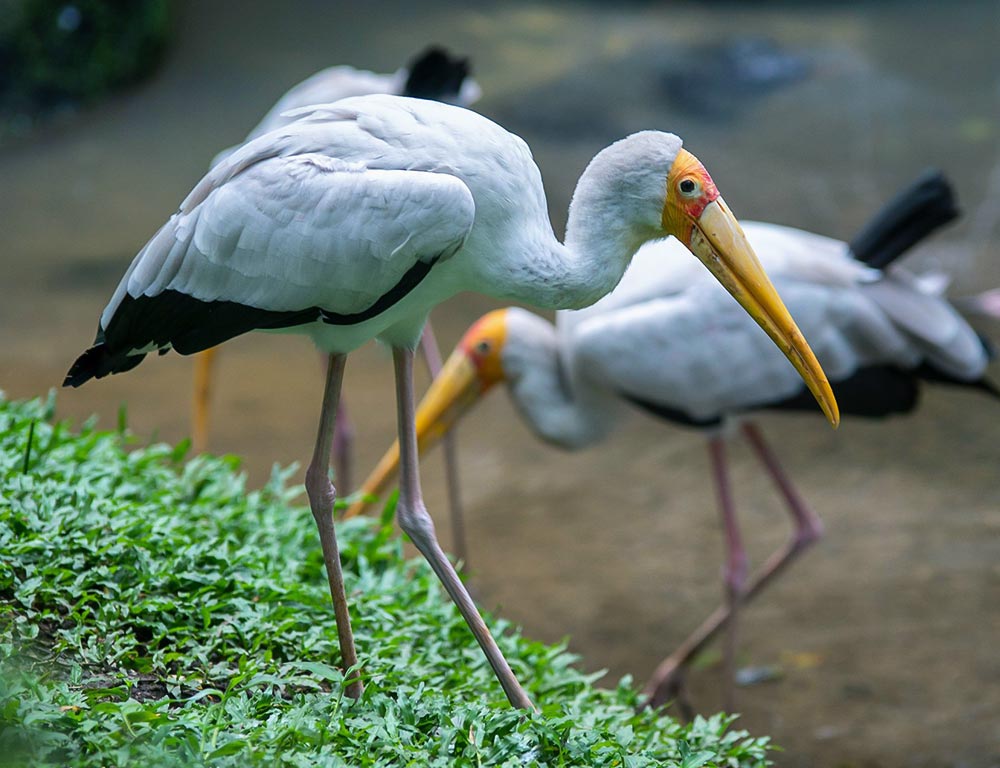
- Scientific Name: Mycteria ibis
- Population: Found in sub-Saharan Africa, South Asia, and Southeast Asia
- Life Span: Around 20 years
- Size: Approximately 90-105 cm in length
- Weight: About 2.3-3.6 kg
- Food: Carnivorous, feeding on fish, amphibians, and invertebrates
- Status: Least Concern
The Yellow-billed Stork is characterized by its long, yellow bill and white plumage with black wingtips. These storks inhabit a range of wetland habitats, including lakes, rivers, and marshes.
They are skilled hunters, using their bills to catch fish and other aquatic prey. Yellow-billed Storks are social birds, often seen in small groups or large flocks.
Their adaptability to various wetland environments contributes to their least concern conservation status. Conservation efforts should focus on preserving wetland ecosystems and addressing potential threats such as habitat loss and pollution.
Wrapping Up
The exploration of the 29 types of ibis has uncovered a diverse avian tapestry, rich in unique behaviors, habitats, and conservation needs.
From the revered African Sacred Ibis to the vibrantly colored Scarlet Ibis, these birds play crucial roles in maintaining ecological balance across various continents.
Understanding their adaptations and the challenges they face underscores the importance of conservation efforts to protect their habitats.
As we celebrate the remarkable diversity within the ibis family, it becomes evident that collective actions are imperative for ensuring the survival and well-being of these captivating birds in our ever-changing world.